Good morning! A bit of housekeeping first: as you might have noticed, this week’s newsletter is a little delayed. I’ve decided to move to Sundays so you have a bit more time to read (and I have a bit more time to write).
Heads up: Flying Blue Promo Rewards for this month have been released. Not as exciting as last month for us Canadians, but I always like to highlight it anyway in case it works out with your plans. Long-haul destinations this month include economy flights between Europe and Miami, Atlanta, Hong Kong, Singapore, and more. Premium economy flights to Chicago and New York are also discounted. The flights are the same price regardless of where in Europe you fly to or from, but will include a connection in either Paris or Amsterdam. Full details here. As a reminder, Flying Blue points can be earned by flying on Air France/KLM or their SkyTeam partners, spending on the Air France/KLM co-branded credit card, or transferring at a 1:0.75 ratio from American Express.
I’ve been feeling uninspired in terms of topics for this week’s newsletter, so I decided to do something a little different. Rather than blabbing on with advice or talking about specific credit cards, I’m going to walk through all the steps to booking business class flights to and from Europe with American Express points. I’m plotting a trip to Spain this spring, so I’m taking you along for the ride.

Step 1: Know Your Transfer Partners
Since I know I want to use Amex points (I’m a little low on other types right now), I’m only looking at the programs that I can transfer those points to: Aeroplan, Avios, Flying Blue, Delta, Cathay Pacific, and Etihad. It’s good practice to run searches on all of the programs you have access to (i.e. can transfer to), although in practice I often focus on Aeroplan and British Airways because they are 1:1 transfer partners, while the others are 1:0.75. I’ll check Flying Blue, despite the inferior transfer ratio, since Air France and KLM both have solid business class products and despite being priced dynamically, they often have decent availability at the low end of the dynamic range. I might also check Cathay Pacific this time, since they very occasionally have British Airways business class flights for less than BA’s own program. I’ll skip Etihad, since they don’t fly to Europe themselves and they mostly have subpar partner award availability and pricing. I’m also skipping Delta because their award flights tend to be quite expensive.
Step 2: Know Your Route Options
Next, I think of all the routes I’d be willing to fly that I know I can book through the programs from Step 1. I’m hoping for my final destination to be Madrid, but since intra-European flights are generally pretty cheap, I’m flexible on routing. This means that my list of routes to check will be fairly long, but it also increases the odds of me finding something good.
I did limit myself to itineraries with a maximum of one stop, since 1) it seems a little silly to do 2 stops on the way to somewhere as close as Europe, and 2) since many award tickets are priced based on distance, adding more connections frequently pushes you into a higher price bracket. A tool like Flight Connections is super useful here! I’m trying to be more methodical about this these days, rather than just checking 50 different flight options and trying to keep it all straight in my mind. This is a first crack at that.
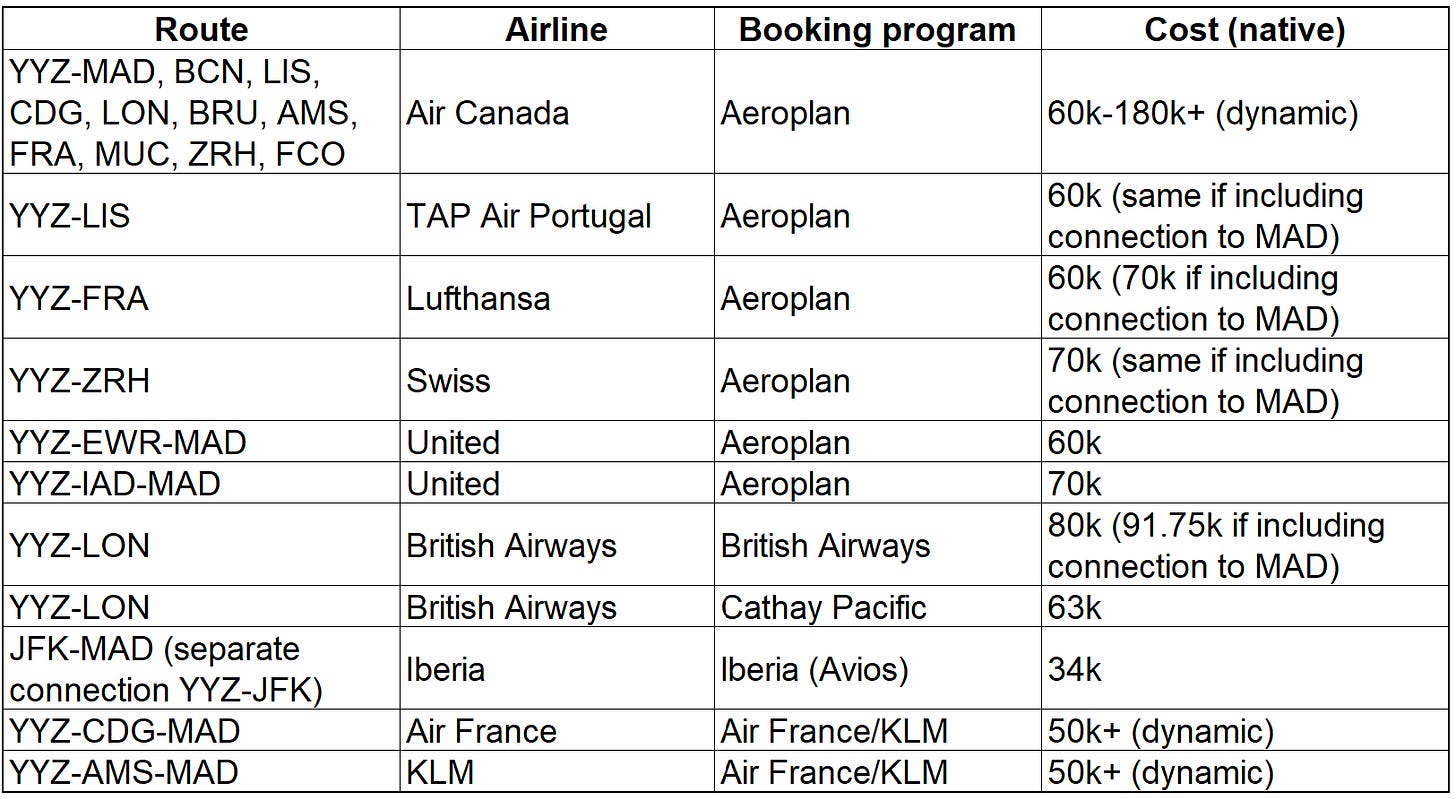
I calculated the prices in the table above using award charts for each airline and Great Circle Map to figure out the distances. Note that these are the prices in each program’s native currency, not accounting for the lower transfer ratios to Cathay Pacific and Air France/KLM. Eagle-eyed readers may have noticed that Iberia is on here despite not being a transfer partner of Amex Canada. This is because they use Avios just like BA, and in most cases, any type of Avios can instantly be turned into another type.
You may have also noticed that one flight on here doesn’t originate in Toronto, and several don’t end in Madrid. I would connect the dots at one end or the other using a repositioning flight, but in general, I try to put those towards the end of my journey. I’d rather miss a short flight from, say, Paris to Madrid because my flight from Toronto to Paris was delayed than miss a flight from New York to Madrid because my flight from Toronto to New York was delayed. The latter is way more manageable. If I’m going to do a positioning flight on the front end of the trip, it’s going to be for a long-haul that’s extra desirable. In this case, Iberia business class is desirable because of the price (34,000 Avios one-way - some airlines would charge that for economy!). Also, it’s important to note that this is all theoretical pricing; many of these routes are hard to find business class availability on, so I won’t have as many options as it might seem.
Step 3: Search for Flights
Next, I go through and search for availability for each of these routes. Since the best time to book business class award tickets is generally either a year out or within 2-4 weeks of travel, and I’m looking for this spring, availability is OK but not great; it helps a lot to have flexible dates.
Once I’ve identified a flight I like, I figure out how long it will take to transfer my points from Amex to the airline. This is a helpful reference. As you can see, most are pretty quick. In some cases, you can call the airline and have them hold the seat until your points transfer over, but not every airline offers this service.
Step 4: Transfer and Book
The last step is for me to log into Amex and transfer the points I need to the airline. In this case, let’s say I decided to book through Aeroplan.
For Air Canada in particular, the transfer should be pretty instantaneous, but sometimes you have to log out and back in for the points to appear. Then all you have to do is complete your booking and you’re on your way!
Hopefully you found this useful and/or interesting! I’ll be sure to share if I snag any good deals for this trip in the next few weeks. Happy searching!

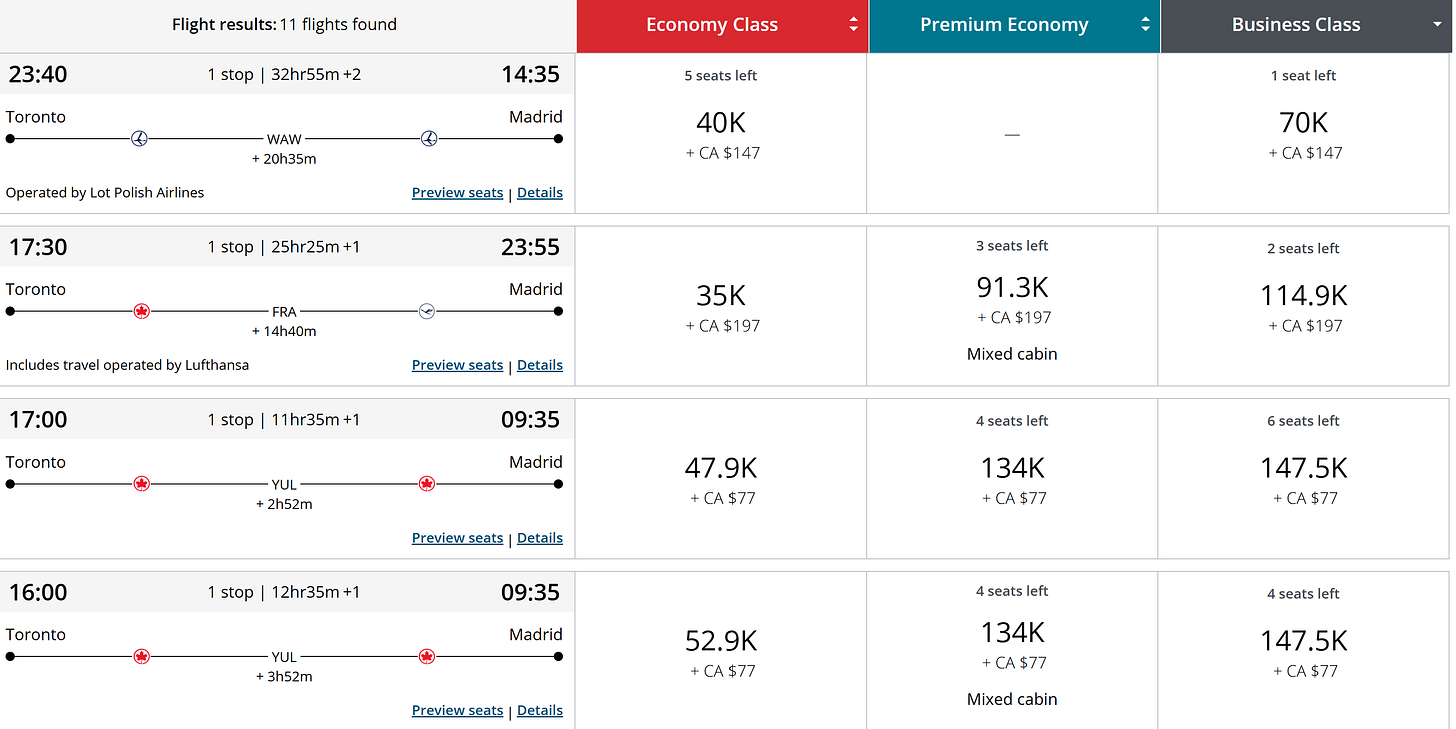
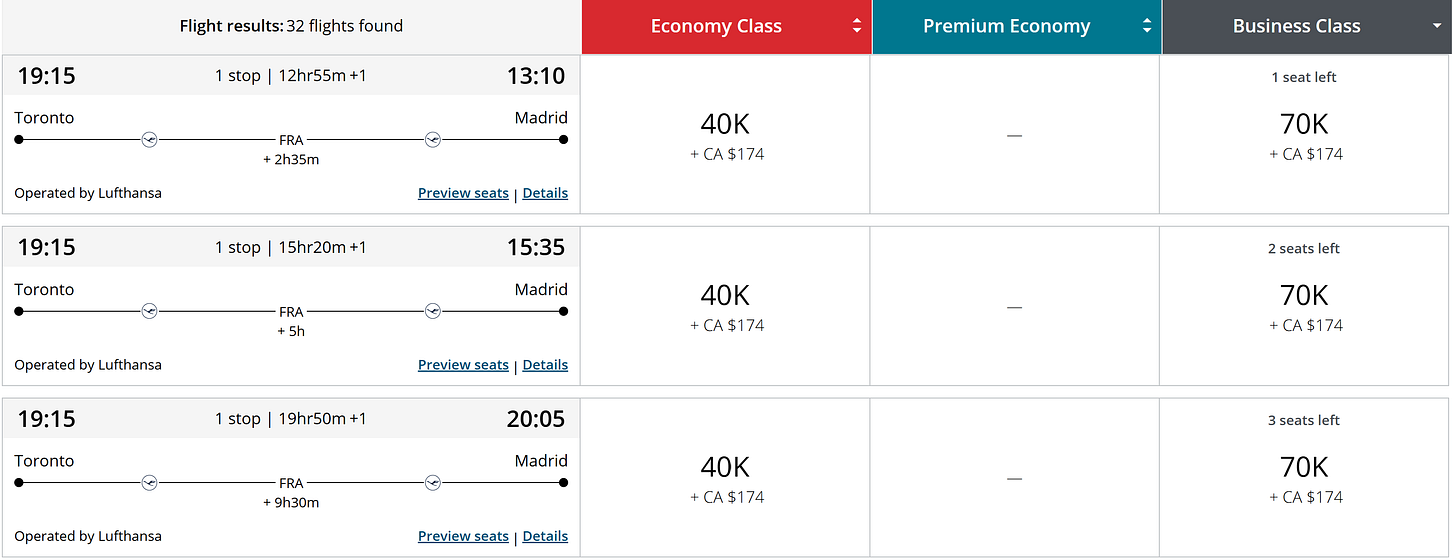
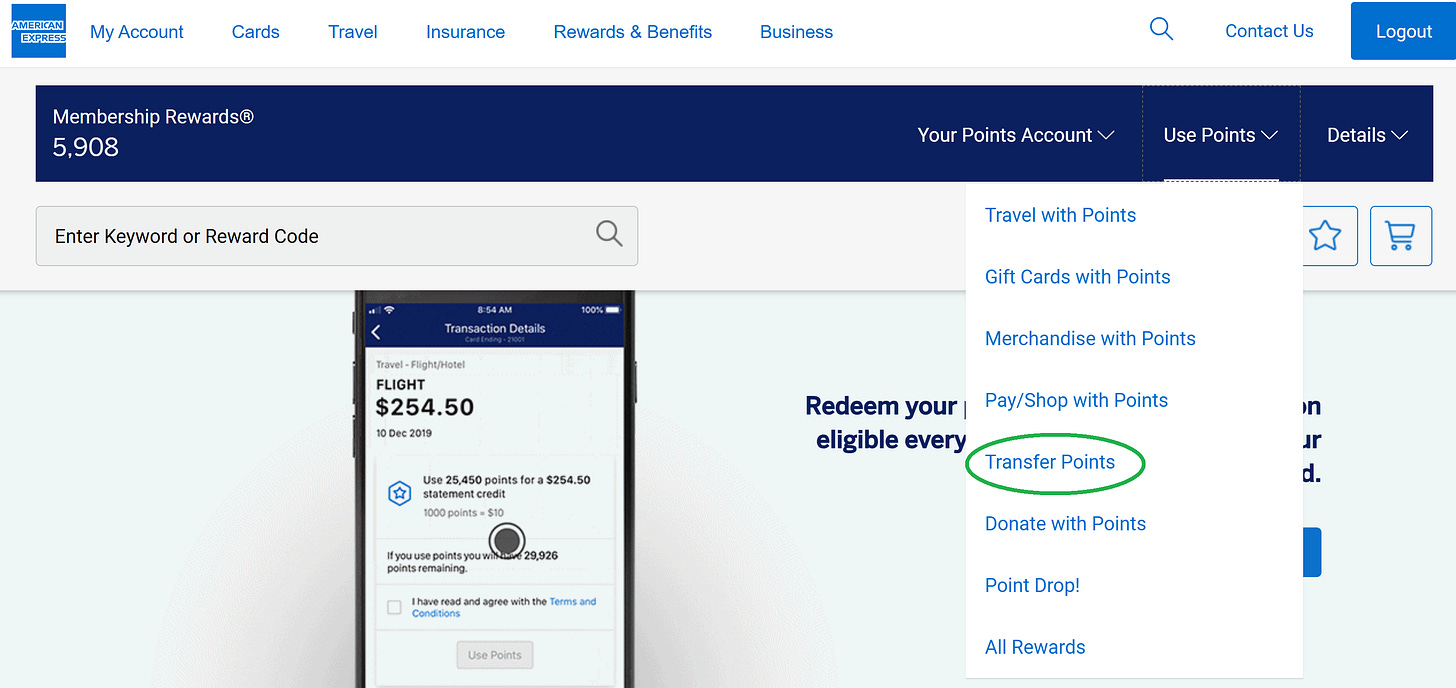
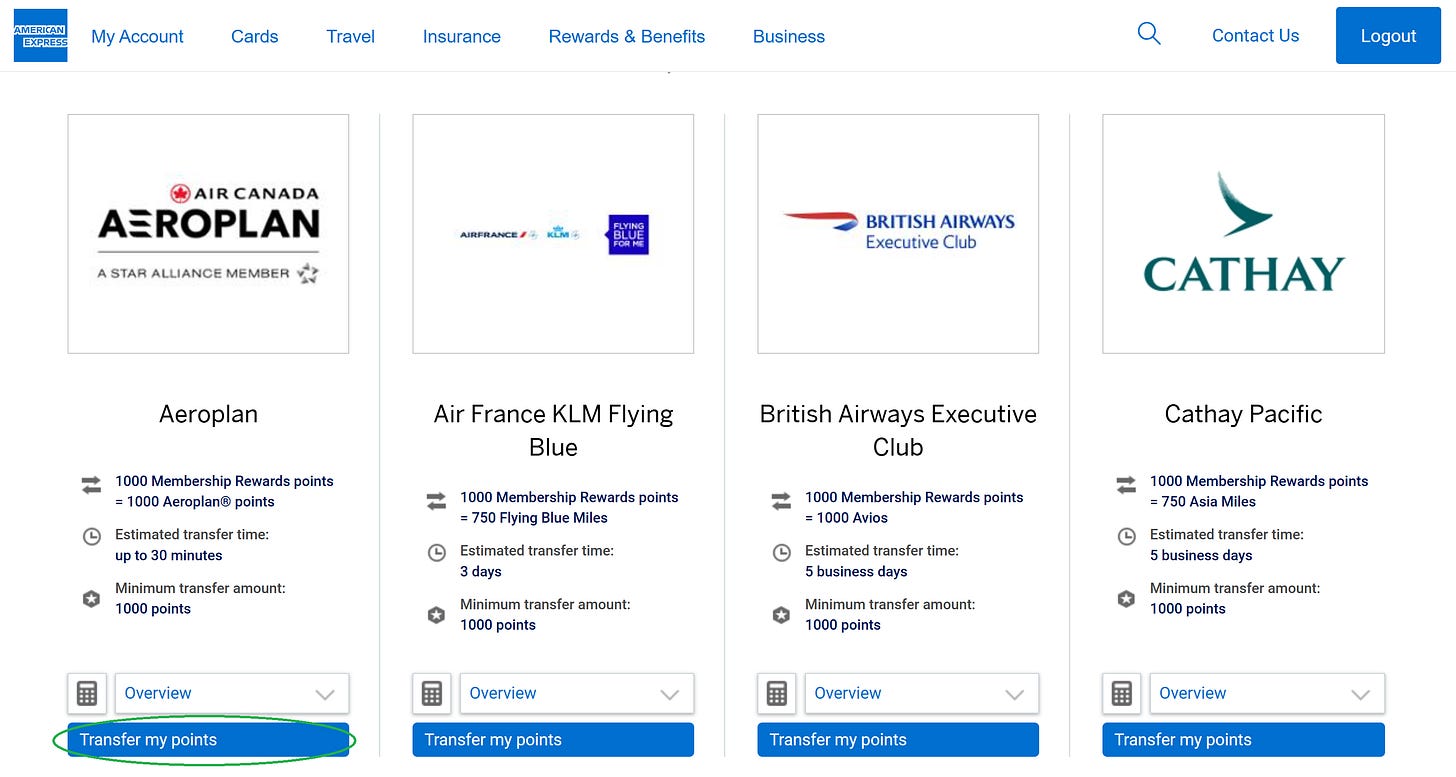
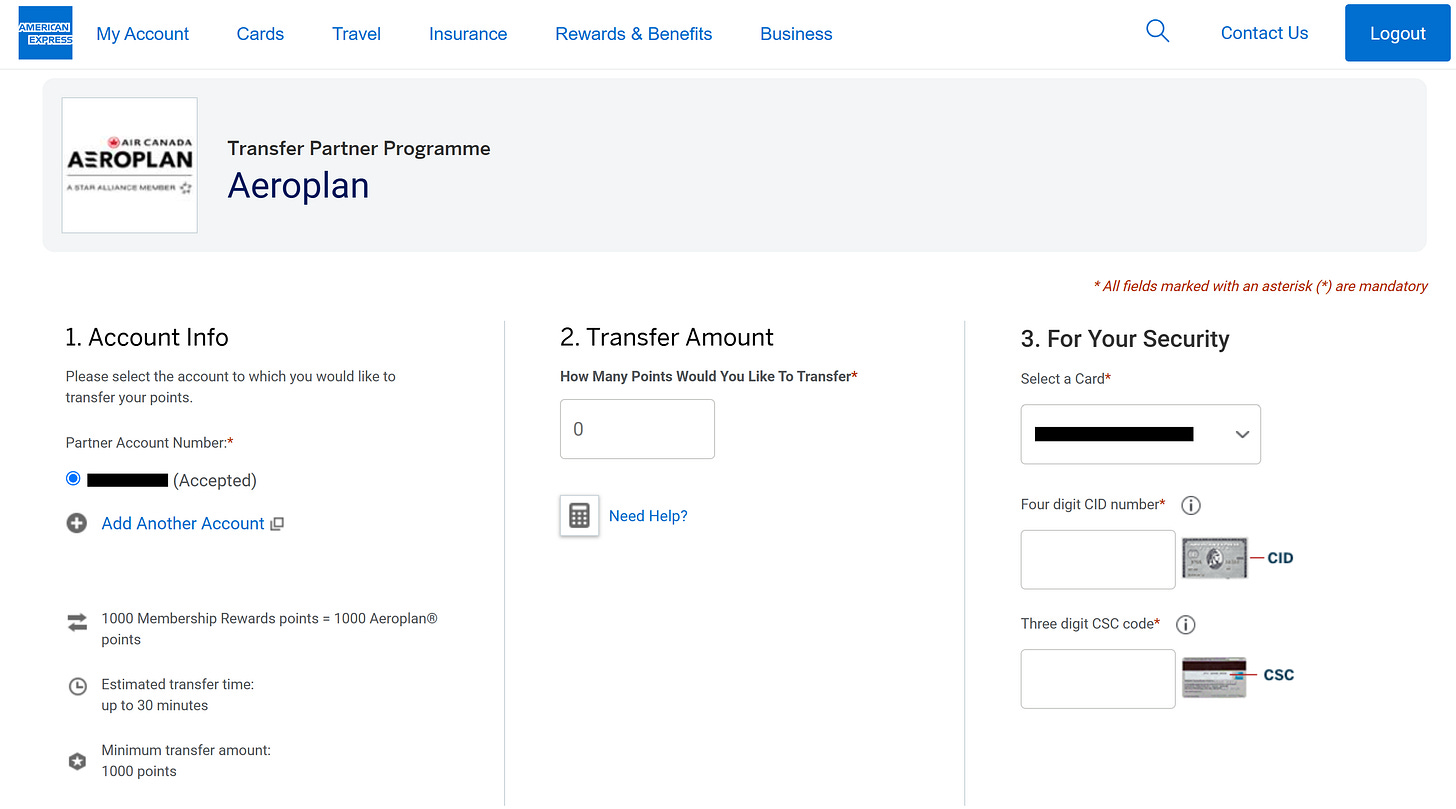
Love it!